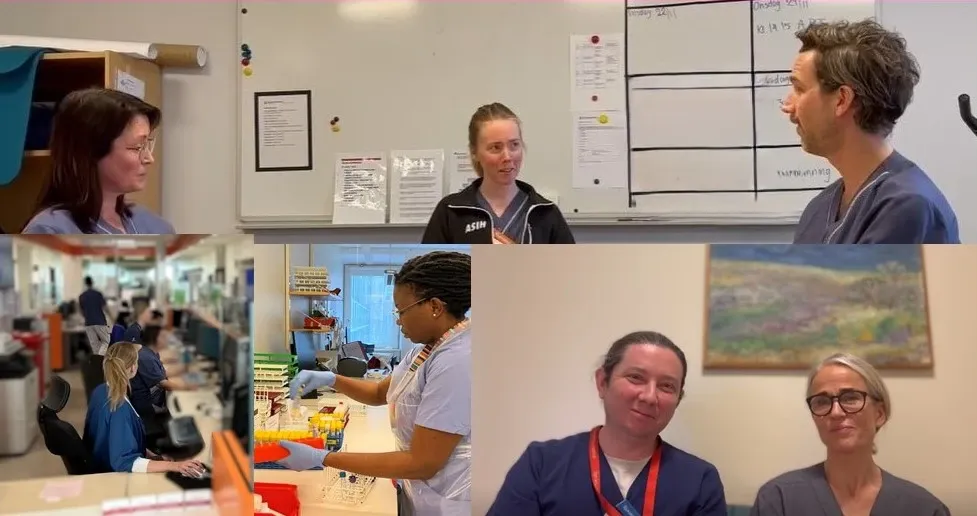To initiate and establish IPL
On this page, you will find suggestions on how you can use IPL in your workplace with a focus on learning. It can range from an entire team working together to two different professions engaging in an activity together. The advice we provide here is based on AMEE guide 169, which deals with IPL.

Preparations for IPL
All involved parties need to be aware of the interprofessional learning objectives that students are expected to achieve. These objectives can be course-specific or based on the overarching goals of the educational institution. Choose relevant learning activities. IPL is not a one-time effort; it should permeate the way of working and can, for example, be practiced through simulation, training based on activity cards, placement in a clinical education department/clinic, or with an IPL activity suitable for the context.
Patient’s Perspective
If a patient is involved in the IPL session, they should be asked to participate, informed about what will happen, and how much time it will take. The patient can often provide constructive and important feedback that is growth-orientated and educational.
Student’s Perspective
You need to know the IPL learning objectives you are expected to achieve during your clinical placement/internship and the purpose of the learning activities being conducted. Prepare yourself, read up on IPL, and feel free to suggest activities that support the student team’s goal achievement.
Supervisor’s Perspective
It can be beneficial to reflect on the values and attitudes towards IPL at your workplace. Assess the IPL knowledge your colleagues have and the strengths within your workgroup. Is there a need for practice and learning together?
Planned IPL activities should be based on course-specific and overarching learning objectives and be integrated into the organization. What constitutes a suitable activity can vary depending on the context; it could be a team conversation with a relative, handling medical equipment, analyzing tissue samples, or performing a surgical procedure.
When planning an IPL learning activity, supervisors and students need to know the learning objectives and the goal of the learning activity, as well as the framework regarding time, responsibility, materials, and procedures. As a supervisor, you need to allocate time and inform students about how the activity will be followed up, evaluated, and assessed. Feel free to look at the assessment tools under resources; students are assessed individually even in a team activity.
Everyone in the organization will be interprofessional role models for the students during their clinical placement/internship. Interprofessional work may need to be highlighted and discussed so that it becomes clear to the students when it occurs.
Leadership's Perspective
As a leader, you need to create conditions for your employees to work interprofessionally and to have students in the organisation. Recognising the value of interprofessional work influences the culture and the ability to implement IPL. You and everyone in the organisation need to have knowledge about IPL and collaboration. Feel free to seek support from the Center for Clinical Interprofessional Learning and Collaboration (C-IPLS) at Södersjukhuset and their resources. They are Sweden’s only center that supports healthcare employees in developing their collaboration and learning across professional boundaries, and they have an overarching mission regarding Region Stockholm. As a leader, you can identify employees who have pedagogical competence and see the connection between IPL and patient safety. These individuals can become key persons to bring together and empower to maintain and develop IPL in your organisation.
